NORMA ESPINOZA | THE FASHION DESIGNER. As a person of color and a Queer artist, Mexican designer pays homage to her ethnic roots
MAJORING IN FASHION at Columbia College Chicago, Norma Espinoza, 21, is a full-time student and a freelance fashion designer. Born in Chicago, she moved with her family to Utah and then returned to Chicago; she currently lives in the Midway area. Both of her parents are Mexican— from the regions of Michoacán and San Luis Potosí—and she defines herself as Mexican and indigenous.
What do you aim to showcase with your art?
I focus on haute couture, handcrafted fashion regarded as a high-end art. It’s mostly known as a French ‘thing’ but any culture can have it. I focus on Mexican artistry like hand embroidery and beading because it’s not as valued as French or Italian art. I like to bring my influence and to show that this is just as valuable, as beautifully handcrafted as a French couture piece.
What motivated you to become an artist?
I’ve always had a natural eye for art and fashion. Given the privilege I have here in America, I wanted to pursue an education in fine arts and show the world that Latinos are here and that we’re capable.
When did you realize you wanted to become an artist?
I’ve been sewing since the age of eight. My grandma was a seamstress, she also did a lot of embroidery on things like pillowcases, so I learned a lot from her at a young age. I also remember cutting up my mom’s curtains and making dresses for my dolls. Then one day I thought, ‘Alright, time to make a dress for myself.’ I made my first dress in middle school and I’ve been creating ever since.
What medium do you work in?
Fashion and clothing, but I don’t make only clothing. I do textile art as well. I often weave or embroider on a lot of pieces.
“My whole family was in the fashion industry, but they worked in sweatshops. I don’t want to contribute to that.“
How would you describe yourself and your culture?
I love Mexican culture. I’m really big on identity and that’s why I always make sure to say I’m a Mexican designer. I have to put that label on myself because otherwise I’m just a designer, right? It is important to showcase your culture and to have it be respected as any other culture would be. Especially as a person of color and a queer artist, our work is still very much devalued.
How does your identity as a Latina artist inspire your art? How has your family influenced what you do?
I always label it as the ‘Mexican’ experience. A lot of my work integrates my experience growing up. I’ve worked with fabrics that are made out of palm leaves to make the type of mat called “petate.” I’ve used my grandma’s embroidery style to embroider some of my own pieces. I source materials from artisans in Mexico and indigenous women.
What is it like being a Latina artist in your community? How has it shaped you?
I’ve had both good and bad experiences. As a Latina artist, I feel very passionate about what I do. I’ve been acknowledged for my work because of my passion but, unfortunately, I do feel like I’ve had more bad experiences than good ones. I’ve been the victim of hate crimes, my pieces have been destroyed, I’ve had people call me racial slurs and say, ‘You’re stealing and copying indigenous culture.’ A lot of people don’t realize that there’s indigenous tribes in Mexico too, not just in America. There’s still a lot of stigma, even in an environment like Columbia College that claims to be anti-racist and accepting. Even labeling myself as a queer artist, it’s like, ‘Oh you’re a person of color and a queer artist, you’re going down.’

How do you showcase your art to your audience?
It’s always been a little tricky, but I’ve done a lot of galleries. I’ve supported other local Latino artists by collaborating with them. I’m in the Latino Alliance Club and we do a lot of galleries and events. I’m also in a charity group called Uncommon Closet, and we focus a lot on catering to queer youth experiencing homelessness and helping to provide services for people in the process of transitioning. I’ve also sold some pieces. I’ve been commissioned to do some artwork in my community. I could probably be doing a lot more, but I’m a student so it’s hard to balance.
What do you think is missing from the art world and what does your art provide? How does it fill that space?
Western fashion is just so prevalent in Western media. I get it, we’re in America. Oftentimes Mexican craft, Latino craft, African American craft, anything that’s not ‘western’ is labeled as exotic and is seen as ancient outdated craft. There’s no modernization. What I am doing is showing that we’re still here and we’re still doing it. More and more artists are incorporating and expressing their cultures through their art. You see more cultural hubs happening here in Chicago. There are more galleries, exhibitions and events with art by people of color.
My work is very much a part of this modernization of Mexican artistry. I want to focus on filling that void and showing that there’s more than just Western fashion and that traditional garbs can be modernized and worn on a daily basis.
What are the challenges you have come across most often?
As I mentioned before, my work has been labeled as old, stolen, or culturally appropriated. But I think the most challenging thing has been how to sell this—haute couture is a dying art. My professors always say, ‘How are you going to sell this? No one’s really buying this stuff.’ But when it comes to couture, it isn’t meant to be bought by the masses. It’s meant to be displayed and admired. My work is often not regarded as a high art; it’s seen as primitive or savage. Taking away those labels would definitely help open people’s eyes to understand that these are things still worn by people today. It’s time to bring it over here.
What do you think of the term Latinx to identify people of Latin American background?
I like the term—I really do. But along with that, it’s kind of impossible to say in Spanish. It’s an American thing really. I normally use it when I’m talking to people my age or younger generations. If I’m talking to people who are from older generation, I use Latino or Latina.
Who is your target audience and how do you want your art to be received?
I always follow the quote that, ‘Art is a mirror that people reflect themselves on.’ My audience is also people who grew up in this environment. Latino people see themselves represented in my work. But again, couture is an iffy subject, so even then it’s probably like the 1 percent that can actually afford these pieces.
How do you build your platform as an artist? Do you use social media?
I do use social media. I used to have an Etsy store but recently I quit that. Most of the time you can contact me through my Instagram. I’m horrible at posting but I’m getting back in there. Often times I build my platform through connections. Friends of friends and working with other designers around the city is normally how freelance designers start off. I also find connections through my fellow classmates—the people who are going to be professionals and practicing artists one day. I am also a teaching assistant so a lot of people come to me for help. I am coming up with a website soon.

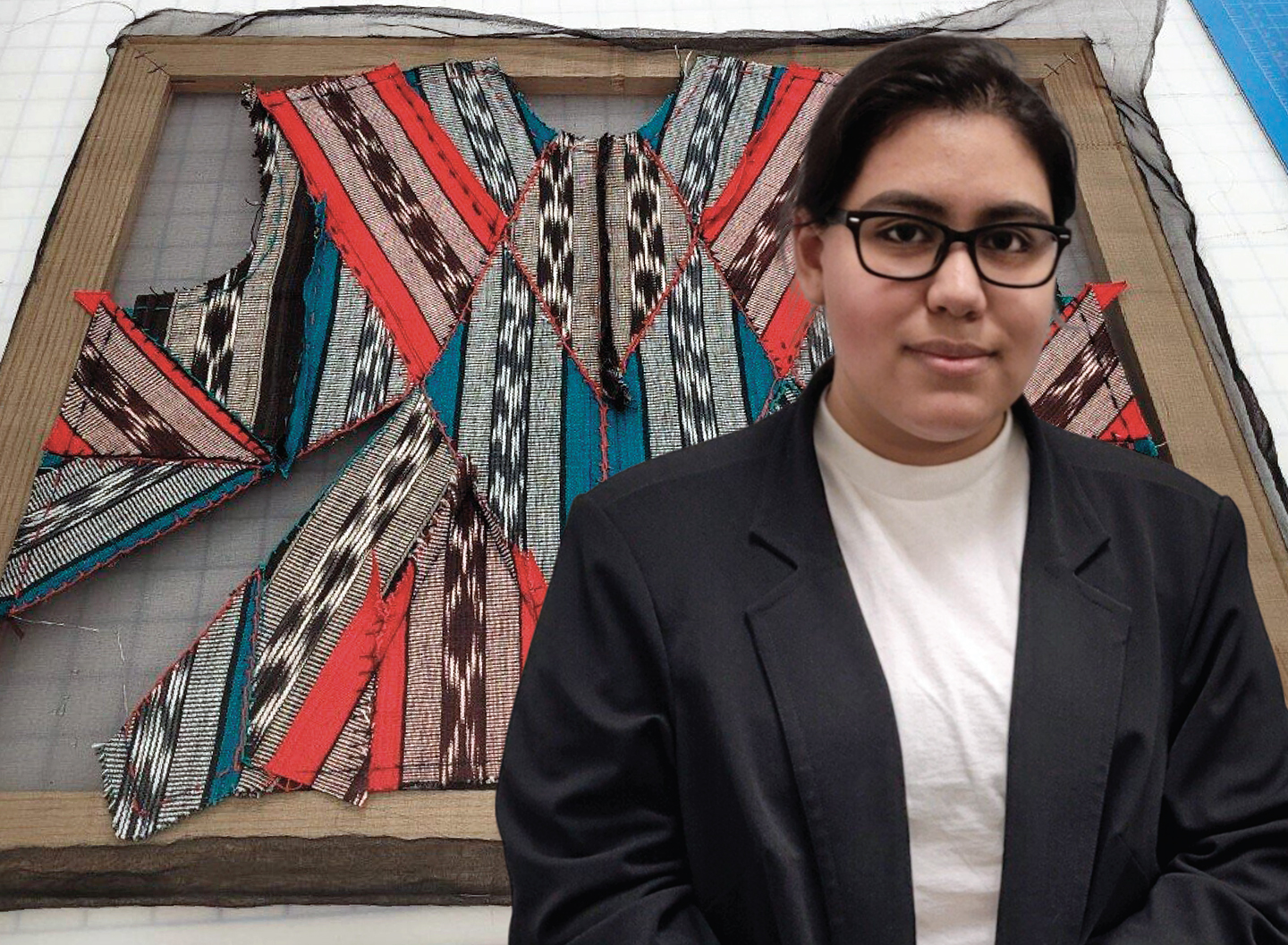

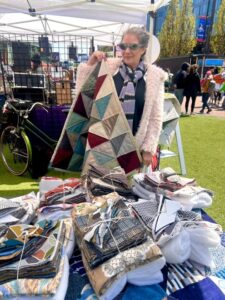
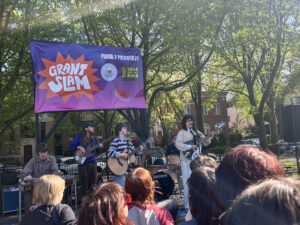

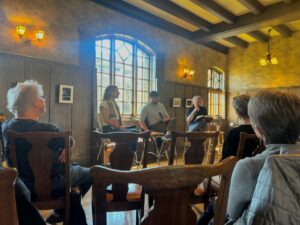

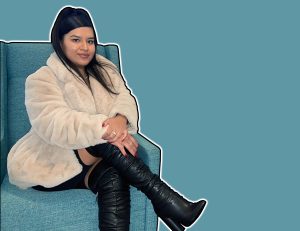
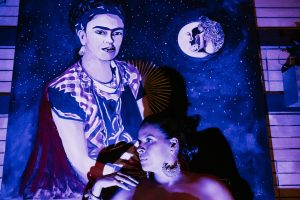
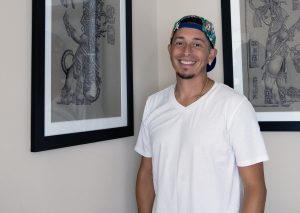
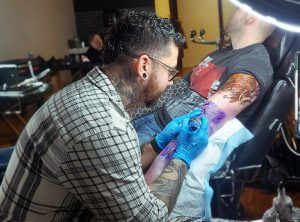
Be First to Comment